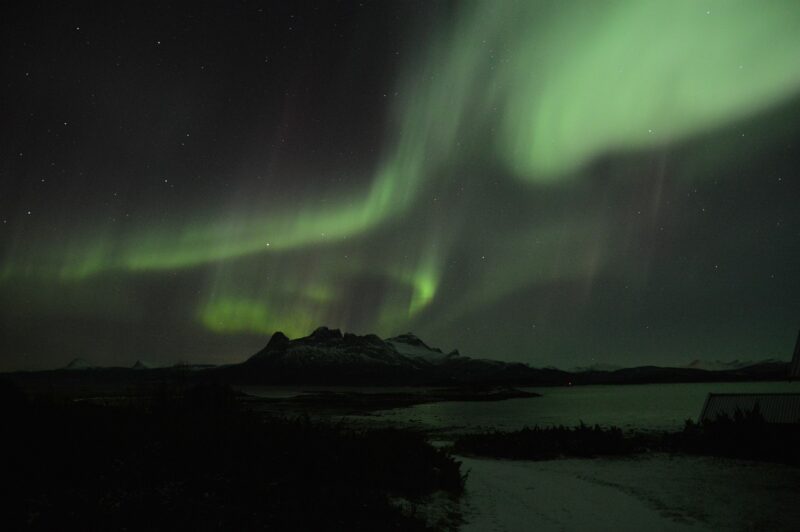Unexplained Phenomena of the Northern Lights and What We Still Don’t Know
November 12, 2024

The Northern Lights, or Aurora Borealis, are one of nature’s most mesmerizing spectacles. While we understand the fundamentals of this stunning phenomenon—the interaction of solar winds with the Earth’s magnetic field—there are still numerous mysteries that remain unsolved. In this article, we will delve into the unexplained phenomena associated with the Northern Lights and highlight what scientists and researchers continue to explore in their quest for answers.
1. The Basics of the Northern Lights
To appreciate the mysteries of the Northern Lights, it’s essential to review how they are created. The auroras are produced when charged particles from the sun collide with gases in the Earth’s atmosphere. These collisions excite the gas atoms, resulting in the emission of light. The color of the aurora varies based on the type of gas involved:
- Oxygen at higher altitudes (above 150 km) produces red and pink hues.
- Oxygen at lower altitudes (below 150 km) gives rise to greens, the most common color we see.
- Nitrogen can produce blue or purple shades when it interacts with solar winds.
While this explanation covers the basics, it fails to account for the many variations and phenomena associated with the Northern Lights that scientists are still trying to fully comprehend.
2. Beyond Colors: Unusual Shapes and Patterns
One of the most captivating aspects of the Northern Lights is their dynamic shapes and behaviors. They can appear as curtains, arcs, spirals, or even pulsating patches of light. While scientists have cataloged these forms, what causes the sudden shifts in structure and motion remains largely unexplained.
- Formations: Why do certain conditions favor the formation of specific shapes, such as spirals or waves? Some studies suggest that these might align with magnetic field lines or plasma waves, yet more research is required to understand the phenomena accurately.
- Flickering Lights: Observers often report rapid flickering or movement of the lights. This phenomenon, often described as ‘breathing’ auroras, has yet to be fully explained. Some theories propose that they are related to fluctuations in the solar wind’s strength, but conclusive evidence is still lacking.
High-resolution satellite imaging and advanced ground-based equipment are essential tools for scientists working to understand these dynamic behaviors more thoroughly.
3. The Role of Solar Cycles & Cosmic Events
Another layer of complexity surrounds the relationship between solar activity and the intensity and frequency of auroras. Solar cycles, which oscillate approximately every 11 years, greatly influence the frequency of auroral displays. However, peculiar events such as geomagnetic storms can create auroras even in atypical conditions.
- Unexpected Solar Events: There have been instances of colorful auroras being observed during low solar activity. Such events raise questions: How do these unexpected displays manifest, and are they influenced by cosmic phenomena like gamma-ray bursts or supernovae?
- Interstellar Influence: Cosmic rays and particles from outside our solar system may also play an integral role in auroras. Scientists are exploring the ways these external factors could affect Earth’s auroras, leading to displays that are unpredictable and nuanced.
Understanding these interactions requires continuous observations and data collection, which can be complicated by the vastness of space and the unpredictability of solar events.
4. Regional Variations: What We Don’t Know
While people in the Arctic Circle are treated to regular displays of the Northern Lights, phenomena such as “Aurora Substorms” create intensive bursts of auroras observed further south. The reasons behind these regional variances are still an active area of research;
- Mapping Auroras: Scientists are studying the geographical patterns to understand why certain regions experience more pronounced displays than others. This could enhance our global understanding of space weather effects on different locations.
- Local Atmospheric Conditions: Differences in atmospheric composition and local weather conditions may contribute to these variations, yet this link remains poorly defined. Are specific atmospheric phenomena influencing the visual characteristics of auroras?
Active collaborations among international research teams and the use of advanced satellite technology will be crucial for unraveling these complexities.
5. The Influence of Climate Change
Climate change has far-reaching effects on our planet, and its influence on natural phenomena like auroras is an emerging field of study. Alterations in the atmosphere and magnetosphere may change how auroras are generated or observed.
- Stratospheric Ozone and Aurora Formation: Researchers are increasingly interested in how changes in the ozone layer might impact auroral visibility. The depletion of ozone could redefine the dynamics of sunlight absorption leading to altered color displays.
- Urban Light Pollution: As cities grow and expand, light pollution diminishes our ability to observe auroras. Scientists are concerned that if urbanization continues, our chances of witnessing these natural wonders may decline, affecting both public interest and research opportunities.
Studying these variables could redefine our understanding of the Northern Lights while contributing to the broader implications of climate change on Earth’s natural systems.
6. Conclusion: Embracing the Unknown
The Northern Lights continue to inspire curiosity, bringing together scientists, enthusiasts, and dreamers alike. While our understanding of this awe-inspiring phenomenon has evolved significantly, many questions persist about the intricate factors that shape auroras, their regional diversities, and their relationship with climate change.
As researchers embark on this journey of discovery, we celebrate the beauty of the Northern Lights and remain open to the wonders that await us in the night sky. Who knows? The next significant breakthrough could occur during your next aurora viewing experience, reminding us that amid the scientific advancements, the magic of the unexplained still captivates us all.
Whether you are a scientist or simply an admirer of nature’s wonders, the Northern Lights remind us of the beauty of our universe, urging us to keep our questions open, our explorations ongoing, and our hearts ready to be amazed.






